- Pearl Jam Albums Ranked
- Dylan's Favorite Betts Song
- Ringo Starr New Tour
- Allmans' Dickey Betts Dies
- 2024 Summer Tour Preview


45 Years Ago: Santana Deliver a Latin Rock Masterpiece, ‘Abraxas’
By 1970, Santana had everything going for it. They’d made one of the grandest debuts in the history of rock music at Woodstock the year before and followed that up with a critically adored and commercially successful self-titled debut record. With seemingly nowhere else to go but down, In September 1970, Santana shattered expectations and delivered what might its greatest record, Abraxas .
Santana first entered the studio to being working on their sophomore release on April 17, 1970 and had the whole thing finished roughly two weeks later on May 2. The band remained complete intact from the one that worked on Santana just months before with the group’s leader and namesake Carlos Santana joined by Gregg Rollie on keyboards and lead vocals, David Brown on bass, Michael Shrieve on drums and with Jose Areas and Mike Carabello on percussion.
Most people aren’t aware, but the two biggest standouts on the record, “Black Magic Woman” and “Oye Como Va” are actually covers of other artist’s songs. “Black Magic Woman” which reached No. 4 on the Billboard Hot 100, was originally a Fleetwood Mac composition written by Peter Green . In fact, in the years after he quit Fleetwood Mac and had given most of his money away, the royalties from Santana’s version of his song was one of Green's biggest sources of continued income.
“Oye Como Va” was originally arranged and recorded by the venerated Latin jazz composer Tito Puente. “I forgot who brought that one in; it was either Carlos or Carabello,” Rollie later said . “I remember thinking to myself, ‘What am I going to do on this?’ You know really I was like, 'Holy cow, I’ve got an organ and an electric piano. What do I do?' I simulated the instrumentation basically and played it on the organ.”
In addition to those standout, there are a number of incredible original compositions on Abraxas as well, including the instrumental number “Samba Pa Ti.” Carlos Santana actually got the inspiration for the song while dealing with jet lag from an overseas tour of Europe. “"Samba Pa Ti" was conceived in New York City on a Sunday afternoon,” he recalled . “I opened the window I saw this man in the street, he was drunk and he had a saxophone and a bottle of booze in his back pocket. And I kept looking at him because he kept struggling with himself. He couldn’t make up his mind which one to put in his mouth first, the saxophone or the bottle and I immediately heard a song […] I wrote the whole thing right there.”
Being the spiritual figure that he is, Santana sought to inject a greater depth of meaning into the aesthetics of this release than he did with his debut. The title of the record is derived from a quote from the Herman Hesse novel Demian , which says, "We stood before it and began to freeze inside from the exertion. We questioned the painting, berated it, made love to it, prayed to it: We called it mother, called it whore and slut, called it our beloved, called it Abraxas ...." The album cover, meanwhile, according to Carlos, “signifies the annunciation of this angel Gabriel to Mary. Mary is the black lady at the center of the cover and Gabriel is the angel with the congas between his legs.”
When it finally debuted, Abraxas was a monster success, hitting No. 1 on the Billboard 200 in the U.S. and beyond on its way to an eventual five-times platinum certification. It was yet another high water mark for Santana both the band and the guitarist and brought a truly unique Latin, blues and rock fusion to the market the likes of which hasn’t been seen either before or since.
See Santana and Other Rockers in the Top 100 Albums of the '70s
This Day in Rock History: September 23
More From Ultimate Classic Rock


RECENT POSTS
Ringo starr adds tour dates in busy 2024, crosby, stills, nash & young’s ‘deja vu’: a volatile chemistry, david bowie ‘ziggy stardust’ era is celebrated with “rock ‘n’ roll star” set, little feat releasing ‘sam’s place,’ 1st new studio album in 12 years.
- A Rollicking Live Album from Willie Nile: Review
- The Paul McCartney Solo Debut: His Declaration of Independence
- When Don Henley Revealed That Deacon Frey, Glenn’s Son, Was Joining Eagles
- ‘Brush With Greatness’: Rock Fans Share Their Stories
- Rock Hall 2024 Inductees To Be Revealed on ‘American Idol’
- The Beatles ‘Let It Be’ Film Returning After 50+ Years
- Remember Paper Lace and ‘The Night Chicago Died’?
- ‘Louie Louie,’ the Kingsmen and the FBI: Only in America
- Ralph J. Gleason Book Explores the Life & Legacy of a Pioneering Music Critic: Author Interview
- Billy Joel CBS TV Special To Get Rebroadcast After Network Goof
- 10 Times the Beatles Used Pseudonyms on Records
- Willie Nelson ‘Stardust’: Reimagining the American Songbook
- The History-Making ‘Come and Get Your Love,’ From Redbone
- Dave Edmunds Shares Two Chuck Berry Stories
- Alice Cooper Adds Dates to Busy 2024 Tour
- The Doobie Brothers’ ‘What a Fool Believes’: Behind Their #1 Hit
LATEST REVIEWS
- Supertramp’s ‘Breakfast in America’
- Bob Seger – Final Tour
- Janis Joplin Biography Review
- CSNY’s ‘Deja Vu’
- Rolling Stones – 2019 Concert Review
- Eric Clapton Celebrates at MSG
- Roger Waters ‘Us + Them’ Tour
- Warren Zevon’s ‘Excitable Boy’
- Tom Petty 40th Anniversary Concert
- 1971: Year That Rock Exploded – Book
- Steppenwolf’s Debut: Heavy Metal Thunder
- ‘Who’s Next’ – Album Rewind
- Privacy Policy
Santana ‘Abraxas’: Post-Woodstock Latin Magic
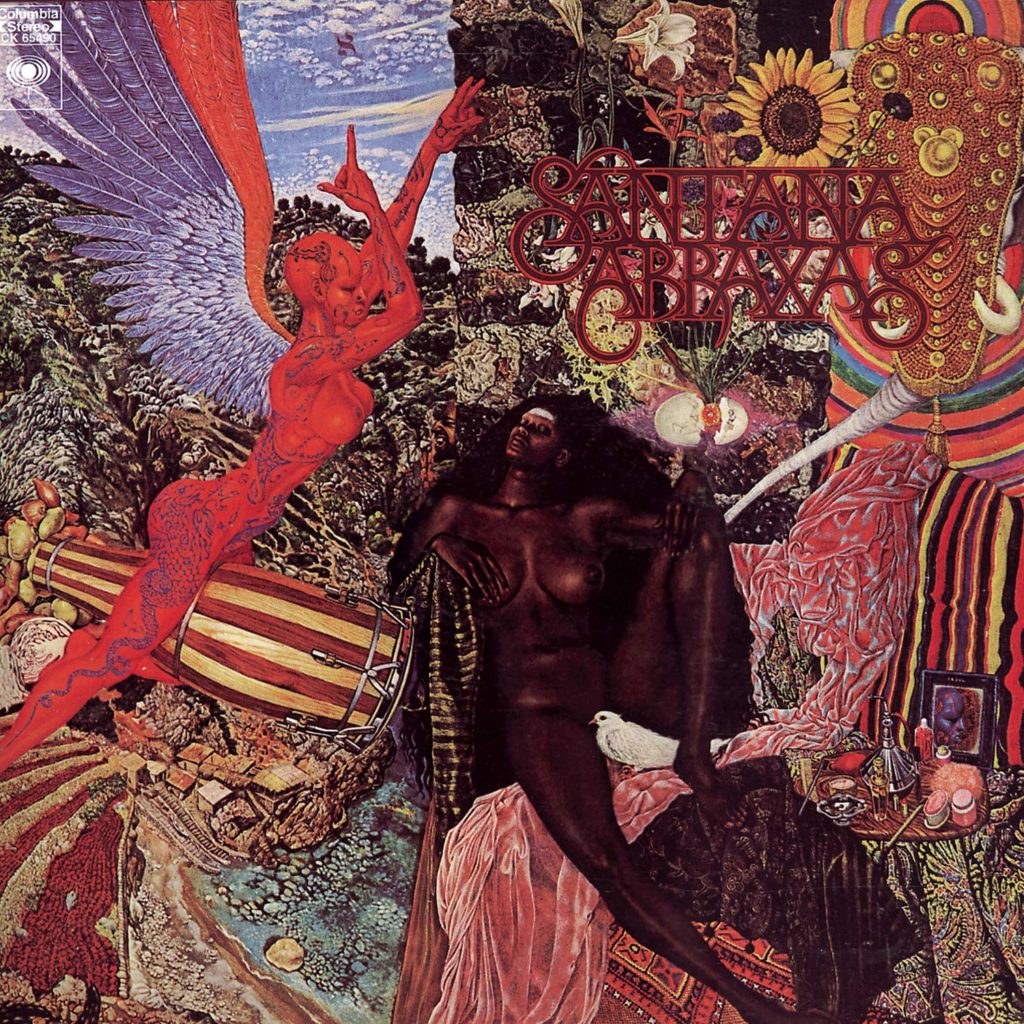
High on mescaline and hallucinating wildly, Carlos says he kept silently praying, “Just help me stay in tune and on time,” during their 45-minute set. Santana blew away the crowd, and when the rest of the country got to see them perform “Soul Sacrifice” in the Woodstock film upon its release in spring 1970, their debut album, already selling well powered by their hit single “Evil Ways,” hit #4 on Billboard ’s Top Albums chart. They’d come a long way from their formation in 1966 as the Santana Blues Band, when Graham’s rival promoter Chet Helms advised Carlos to keep his job as a dishwasher, because Latin-tinged rock was a one-way ticket to nowhere.
When it came to recording their second album, eventually titled Abraxas after a quote from novelist Herman Hesse, Santana wanted to expend more effort, and make a better-sounding record, than their somewhat rushed debut, which took only two weeks of studio time. “All the material we played on the first album,” Santana says, “we were playing for three or four years already, so all of a sudden we had to go hunt for or create new songs.” Keyboardist Gregg Rolie and Carlos had gotten friendly with Fleetwood Mac’s main man Peter Green; Rolie claims he bugged Carlos for a year to record Green’s already well-known song “Black Magic Woman.” It turned out to be their biggest hit to date when edited down to 3:16 for single release (the Abraxas version was part of a medley with jazz guitarist Gabor Szabo’s “Gypsy Queen”).
Working with veteran recording engineer Fred Catero at Wally Heider Recording Studio in San Francisco, Santana (Carlos, Rolie, bassist David Brown, drummer Michael Shrieve and percussionists Jose “Chepito” Areas and Michael Carabello) achieved their goals. The opening instrumental “Singing Winds, Crying Beasts” announces immediately that conga drums, timbales and dramatic cymbal work would underpin the bluesy keyboard, guitar and bass work, and that vocals would be minimal in this unusual Latin band. Another of the album’s stellar instrumentals, “Samba Pa Ti,” is quintessential Santana, a slow-burning, sensual jam featuring Carlos’ expressive guitar. Carefully controlling his sustain and feedback, Carlos manages to filter blues artists like B.B. King through the psychedelic experimentation of players like John Cipollina and Eric Clapton, and yet remain wholly unique.
The infectious “Oye Como Va,” a composition from the Latino big-band veteran Tito Puente, followed “Black Magic Woman” into the Billboard top 20, filling dancefloors nationwide, and “Incident at Neshabur,” co-written by Carlos and pianist Alberto Gianquinto, points clearly to Carlos’ burgeoning interest in the “jazz-fusion” movement (which was to have profound implications for Santana’s future). Rolie, playing the Hammond B-3 organ, loved its “time changes, colors and things that musically were very sophisticated,” likening it to the work of one of his keyboard idols, Horace Silver.
Rolie sings his own originals “Hope You’re Feeling Better” and “Mother’s Daughter,” both more conventional organ-driven blues-rock that nonetheless give Carlos and the percussionists some fiery solo time.
Related: Our interview with Santana’s Gregg Rolie
Released on Sept. 23, 1970, the Abraxas LP was wrapped in a truly striking cover, the 1961 painting “Annunciation” by German artist Mati Klarwein, which seemed custom-made for Santana when Carlos spotted it in an art gallery (Mati also supplied the iconic artwork for Miles Davis’ Bitches Brew earlier in 1970). Abraxas quickly went to #1 on the album charts, and was certified Gold by the RIAA on Oct. 20. It stayed in the Top 100 for nearly two years and sold several million copies. A 1998 CD reissue added some excellent live recordings from the Royal Albert Hall in April 1970.
Related: What were the other #1 albums of 1970?
The “classic” Santana personnel lineup only lasted one more album before Carlos reconfigured the group, but they came together again for a new album and series of live dates in 2016 with none of their power diminished. A perennial “seeker” with a sunny, spiritual disposition, Carlos Santana continues to make extraordinary music to this day—he continues to tour , and shows no signs of retiring.
Watch a 1970 live performance of”Black Magic Woman”
- Latest Posts
- The Paul McCartney Solo Debut: His Declaration of Independence - 04/17/2024
- Willie Nelson ‘Stardust’: Reimagining the American Songbook - 04/15/2024
- Bob Seger ‘Live Bullet’: Old Time Rock ‘n’ Roll - 04/12/2024
Stories We Want You to Read

2 Comments so far
I first heard Santana’s 1st album as soon as it came out with friends in college…BLEW US AWAY! We had never heard anything like it!!! those great musical days! And the opening track on Abraxas is positively haunting/hypnotic/rapturous! This music should live forever…for me it will/has!
Cool! Yeah, nothing quite like those first few Santana albums they were just so awesome and their musical talent was unquestionable. Those guys really knew how to come up with killer tunes. Luckily I got to see Santana many times although not quite with the original band mostly starting in the 80s including a great show at a small venue in Salinas California where I met Carlos afterwards.
Click here to cancel reply.
Your data will be safe! Your e-mail address will not be published. Also other data will not be shared with third person.
Comment * -->
This site uses Akismet to reduce spam. Learn how your comment data is processed .
Loading, Please Wait!
How Santana Took Their Blues-Rock Jazz Fusion to Exotic New Realms with 'Abraxas'
Over 50 years later, Carlos Santana sits down with GP to reflect on one of his most enduring, influential works.

”To me, there are two kinds of guitar players,” Carlos Santana says. “Some people go up and down, or left and right, and some people go deeper in a different way by bending the strings.
"Because once you bend the strings, you’re messing with microtones. And microtones are the ones that give people chills. It brings tears to their eyes. There’s something about the sound of a microtone that reminds molecules to scream.
“Once you bend the note a certain way, like Otis Rush, Ali Farka Touré, or B.B., Albert, or Freddie King, you get attention in a different way, because you start to sound more like a woman’s voice. So for me, playing guitar is beautiful in many ways, like a Segovia way or Paco de Lucía way.
“But when you stop and bend the notes – even when it’s just nylon strings – if you bend them a little bit, people go, ‘Oooooh.’ It gets sacred and sexy really quick.” Sacred and sexy is one way to describe the cover of Abraxas , the Santana group’s second album, released more than 50 years ago in 1970.
Its title refers to a deity associated with early Christians’ mystic practices, though the meaning of the word has been lost. It may be a reference to “the salvation of the cross.” And indeed, the painting on the album’s front presents a surreal and sensual interpretation of a sacred moment.
Titled Annunciation , and painted by German-French painter Mati Klarwein, it depicts the angel Gabriel as a winged, bright-red female form straddling a conga drum in a landscape filled with fruits, flowers, and other fertility symbols, pointing to the heavens as it reveals to a Black, naked Virgin Mary that she will conceive the son of God.
Meanwhile, the back cover carries a quotation from German author Herman Hesse, who called Abraxas “the god who was both god and devil.”
“We stood before it and began to freeze inside from the exertion,” it reads. “We questioned the painting, berated it, made love to it, prayed to it: We called it mother, called it whore and slut, called it our beloved, called it Abraxas ...”
But sacred and sexy are also apt descriptions of the music on Abraxas , in which Santana took their blues-rock jazz fusion to exotic new realms that celebrate the spiritual and carnal. Among the tracks is the band’s hit Latin-rock cover of the Peter Green–penned Fleetwood Mac song “Black Magic Woman” and a hard-driving rendition of Tito Puente’s party favorite “Oye Como Va.”
Both songs would become hits, pushing the album to the top of the charts and securing Santana’s place in rock history following their breakout success at Woodstock. The band had played an electrifying set at the festival on August 16, 1969, giving them a massive career boost just two weeks before the release of their self-titled full-length debut.
The album’s second single, “Evil Ways,” became a Top 10 hit in the U.S. But as the demand for a follow-up rose, there was just one problem: After performing the same songs for the last three years, Santana was out of material.

The band went off to write and hunt for songs, and each member came back with very different contributions. Gregg Rolie, Santana’s keyboardist and lead singer, brought his own vocal-driven rock tunes, as well as “Black Magic Woman.”
Percussionist José “Chepito” Areas contributed two Afro-Caribbean pieces that showcased his timbale chops, while percussionist Michael Carabello created a meditative mood setter with elusive wind chimes, cymbal swells, and majestic piano chords. Carlos Santana took his wah pedal and set it to a half-open position to make his Gibson cry through the wistful instrumental “Samba Pa Ti.”
As much of a classic as that ballad is today, his bandmates were not convinced it belonged on the album.
He also teamed up with pianist Alberto Gianquito to co-write an epic jazz-rock ride through briskly shifting time and key signatures, and suggested that the band should cover Puente’s “Oye Como Va.” Bassist Dave Brown would serve as the album’s engineer together with John Fiore, while Michael Shrieve once again played drums.
Sessions for Abraxas took place at Wally Heider and Pacific Recording Studios in the Bay Area in April 1970, with Santana and Fred Catero co-producing.
I think we were the only ones besides Motown and George Benson who had congas, electric guitars, and Hammond organ. But we brought a lot more street dirt
Catero was a New York producer and engineer who’d relocated to San Francisco to work for Columbia, where he recorded albums with Sly & the Family Stone ( Life ), Big Brother & the Holding Company ( Cheap Thrills ), and Cuban percussionist and bandleader Mongo Santamaría ( Stone Soul ).
“We knew that Fred had recorded with Mongo Santamaría, so he knew how to record congas,” Santana says. “I think we were the only ones besides Motown and George Benson who had congas, electric guitars, and Hammond organ. But we brought a lot more street dirt.”
After a month in the studio, the band released Abraxas on September 23, 1970 to a mixed critical reception. Today, it’s widely regarded as their most essential album and a rock and roll masterpiece.
Carlos Santana took time to speak with Guitar Player about the song selection and recording process of Abraxas , the role of his guitar and the gear he used for different songs, and how he sees his band’s creation 50 years later.
After Woodstock, the band was in need of new songs. How did you pick the selection of tunes that appeared on Abraxas ? Was there any debate among the band members about which ones should be included on the album?
From what I remember, some things were very easy, because we trusted one another. Other things were a little challenging, because some people had a different idea of what was rock and roll and what was not. I had to put my foot down for “Oye Como Va” because I thought it was like “Louie Louie” – a forever Friday and Saturday party song.
There are certain songs, like “Who Let the Dogs Out,” “Macarena,” or “La Bamba,” that go viral really quickly. I had a feeling that “Oye Como Va” was that kind of party song that makes people drop their sorrows or problems. The other song where I had to put my foot down was “Samba Pa Ti.” I said, “It’s going on the album! Otherwise you’ll have to get another guitar player!”
Sometimes you have to fight for space on an album. It’s a healthy thing, because you’re letting people know. Plus we were all learning how to create within the compound of a band. We had developed our sound for three to four years before that album came out, because we were touring a lot. And for the first three or four albums, we did things as a band, and then, eventually, it became my band.

What was the mix of personalities like in that version of the band?
You know, we were like San Francisco street mutts. [Concert promoter] Bill Graham was the one who told us that we were something that we had no idea we were. He thought we were really different from all the other bands in San Francisco.
The beauty of that [version of] Santana was, although I never went to college, it was a bit like a dormitory: In this room you have a person who’s totally into the Beatles and the Rolling Stones, in here you have someone into Sly Stone and Jimi Hendrix, and then you have another person who’s totally into Coltrane and Miles.
And with every room that I go into, I’m learning something. I’m into Gábor Szabó, Baba Olatunji, and also Coltrane. Abraxas is an amalgamation of all those who we love. It’s just that when we played it, it sounded like us.
Fred Catero was very sweet and giving, to allow the musicians to accept and get past one another to create the music
Who suggested the title?
Michael Carabello was very instrumental in how the album looked and sounded. I believe he suggested the name, and he also brought the album cover. Michael and I are still very close.
But I’m also really grateful to Michael Shrieve, Gregg Rolie, Chepito, and Dave Brown. Everybody – even the people like Alberto Gianquinto, the piano player who used to play with James Cotton, and [then–road manager] Ron Estrada and [personal manager] Stan Marcum, who found me playing in the streets, while I was still in Mission High School.
Abraxas is such an eclectic album. You’ve got psychedelic rock tunes with heavy riffs and Hammond organ, an upbeat Latin party hit, songs that sound like spiritual incantations with Afro-Caribbean percussion and group vocals, and a jazz-fusion instrumental where you’re all really stretching out. Did Fred Catero get what you were going for, or did you have to lead him?
He was very sweet and giving, to allow the musicians to accept and get past one another to create the music. Just like Teo Macero with Miles [producing Bitches Brew ], he had to wait for the songs to enter and the musicians to get out of the way. But we were learning together.
What was your process for tracking guitars?
We used three microphones for every instrument in order to also capture the room, because that’s what the ears hear. We never put microphones totally in front of the speakers.
One was far in front of them, and one was way away in a corner by the ceiling. And I’d work with every microphone, spending five minutes with each one to open them up like an aperture on a camera, because you’re letting information come in.
Otherwise it’ll sound very thin and annoying, like you’re playing through the mixing board or a pedal. I don’t use pedals, other than a wah-wah, because as soon as you use pedals, you sound like you’ve got a mask.
When people ask me, “But how do you get your sound?” I say my sound is my heart, my fingers, and my emotions. It’s not like I need to have a package of ingredients. No, no, no, it’s not like that. You are the sound. Your emotions, your feeling, and your passion.
The intention was: What would a sound that’s combining Wes Montgomery, Otis Rush, and Gábor Szabó be like? Or a little bit of Jimi Hendrix with Paco de Lucía?
At this point were you still using the red Gibson SG Special that you’d played at Woodstock?
No, by that time I had moved on to two other guitars. I had one that kind of looked like Bob Marley’s guitar [a mahogany Gibson Les Paul Special], and then I went and got a Les Paul Custom, cherry red with yellow.
That’s because the one that I played at Woodstock, unfortunately, wouldn’t stay in tune. In the past I’ve said that guitar was like wrestling a snake, but really it was that the neck kept moving, and then the intonation changes drastically and pretty bad. So I got rid of that guitar.
What was your intention for your guitar tone?
The intention was: What would a sound that’s combining Wes Montgomery, Otis Rush, and Gábor Szabó be like? Or a little bit of Jimi Hendrix with Paco de Lucía? And that’s what I was doing with “Black Magic Woman/Gypsy Queen” and “Oye Como Va.” Eventually, though, I didn’t have to think like that anymore.
What kind of gear did you use to get the sound that you wanted? In your autobiography, The Universal Tone , you mention using a Boogie amp, but some say that you used a Fender Twin, possibly modified by Bob Gallien?
It was before all that. I was using two to three Twins, because I was copying the sound of Michael Bloomfield, Peter Green, and some of B.B. It wasn’t until ’72 that Boogies were created.
I also used a Marshall on “Hope You’re Feeling Better,” and that was a little different for me, because I wasn’t used to hearing the tone from my hands sound so brash and big.
Even though I’d heard Jimi and Eric Clapton, it’s very daunting to handle a Marshall full on. It’s like wrestling with a big, electric gorilla. So on “Samba Pa Ti” and all of that, I was still using the Fender Twin.
Bill Graham invited us to his office and played “Evil Ways” as he explained where the intro, verse, and chorus are. We weren’t used to dealing with songs like that
You didn’t have a lot of guests on the album. It’s the band plus Alberto Gianquinto on piano [“Incident at Neshabur”] and Rico Reyes on backing vocals and percussion [“Oye Como Va,” “El Nicoya”].
Yeah, I think we were more guarded with just the band in the beginning. Bill Graham had told us, “You don’t even know what a song is. You guys play a bunch of ass jams with no beginning and no end!” And we were like, “Wha?” He invited us to his office and played “Evil Ways” [written by Clarence Henry] as he explained where the intro, verse, and chorus are.
We weren’t used to dealing with songs like that. Gregg and I, we just jammed to stuff like the Jazz Crusaders. So it was Bill Graham and Alberto Gianquinto who made us make a song complete, and within three to four minutes instead of within 14 minutes. But it worked.
It would be great to hear stories behind some of the songs. Let’s start with the opening track, “Singing Winds, Crying Beasts.”
I remember quoting “Eleanor Rigby” by the Beatles, but not sounding like them. Gregg and Michael [Carabello] had created this mood, and I wanted to make my guitar sound like a violin and a lady crying in the night because she can’t find her baby.
What about “Black Magic Woman/Gypsy Queen”?
“Black Magic Woman” was played for the first time at a sound check in Fresno at a parking lot. Gregg wanted to do this Peter Green song, and I had heard of him a lot, but not that song. So when we started it off, I thought I should try a little bit of Wes Montgomery with a bit of Otis Rush. And that was it. “Gypsy Queen” is pure Gábor Szabó with a little Jimi.
What do you remember from “Incident at Neshabur”?
That’s the beginning of me wanting to be and sound like Miles, bending notes and getting all inside your heart. See, the beginning of it [sings the guitar riff] came from Alberto. He and I wrote the song, but he had lyrics which went. “Can you dig, can you do, can you do the pimp thing?”
By the grace of God, I see this creation right out there with the Beatles’ 'Abbey Road' and Led Zeppelin and the Rolling Stones
And the words at very end of the riff went, “Go ahead brother, right on.” When I heard that, I was like “Really? Okay.” The other part [sings the melody that takes the song into the second, meditative part] has two chords that are a bit like “Fool on the Hill.” I just took those two chords and played everything that I was hearing at the time.
It seems like it would be hard to release this type of album today and achieve the kind of commercial success you had. What do you think?
That’s a very good question. I think the times back then were a lot more expansive. Nowadays, people create words like alternative reality and artificial intelligence, and this generation maybe wouldn’t know what to do with an Otis Redding, Jimi Hendrix, or Miles Davis. In the ’60s, people were expanding their consciousness. Today, they don’t do that as much.
How do you see your creation 50 years later?
By the grace of God, I see this creation right out there with the Beatles’ Abbey Road and Led Zeppelin and the Rolling Stones. Not on top, not below. Right with ’em.
- Abraxas is available now on all formats , including vinyl, via Sony Legacy.
Get The Pick Newsletter
All the latest guitar news, interviews, lessons, reviews, deals and more, direct to your inbox!
“We all knew it was really good… The guitar playing is just amazing”: How Dickey Betts made “Ramblin’ Man”, triumphed over tragedy and led the Allman Brothers to their greatest success
“The chord progression in the Highway Star solo – Bm, to a Db, C, and then G – is a Bach progression”: Ritchie Blackmore on Steve Howe, Jimi Hendrix, classical influences and more
“Sometimes things like that just come together, like a piece of magic. I wrote that song in just five minutes”: Dickey Betts on dueling with Duane Allman, composing Allman Brothers' biggest hit, and the oddball Les Paul/SG hybrid he “personally designed”
Most Popular
- 2 “We all knew it was really good… The guitar playing is just amazing”: How Dickey Betts made “Ramblin’ Man”, triumphed over tragedy and led the Allman Brothers to their greatest success
- 3 “The chord progression in the Highway Star solo – Bm, to a Db, C, and then G – is a Bach progression”: Ritchie Blackmore on Steve Howe, Jimi Hendrix, classical influences and more
- 4 “Dickey was larger-than-life, and his loss will be felt worldwide”: The Allman Brothers Band’s Dickey Betts has died at 80
- 5 “Joe Walsh insisted that I buy it, and he was right”: Jimmy Page on his “Number 1” 1959 Gibson Les Paul
Santana: Abraxas - Album Of The Week Club review
Fusing afro-latin rhythms and west coast rock more more successfully than previously, santana's abraxas was also the soundtrack to at least two european back-packing adventures.
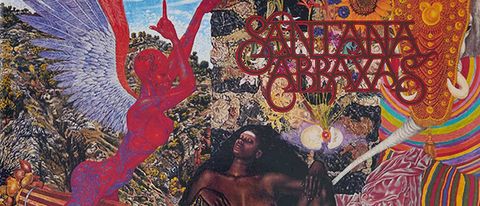
You can trust Louder Our experienced team has worked for some of the biggest brands in music. From testing headphones to reviewing albums, our experts aim to create reviews you can trust. Find out more about how we review.
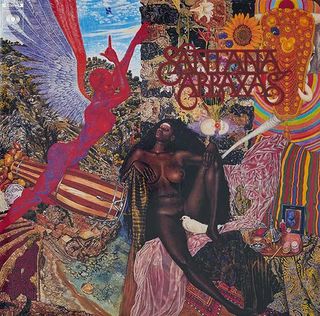
Singing Winds, Crying Beasts Black Magic Woman/Gypsy Queen Oye Cómo Va Incident at Neshabur Se a Cabó Mother's Daughter Samba Pa Ti Hope You're Feeling Better El Nicoya
Fusing Afro-Latin rhythms and West Coast rock more effectively, more excitingly and more successfully than had been done before, Santana 's second album and still their definitive masterpiece, Abraxas, caught the full force of Santana’s style and infused it with the heady spirit of the era.
The swirling atmospherics of the opening Singing Winds, Crying Beats merge seamlessly into the languid Black Magic Woman , the combustible Gypsy Queen and the vibrant Oye Como Va to produce a continuous 15-minute suite that portrays the band’s broad emotional range.
There are also the complex, jazz-influenced Incident At Neshabur , more percussion pyrotechnics on Se A Cabo , and the sublime instrumental Samba Pa Ti, which has become Carlos’s signature tune.
"I felt Santana had a very dynamic range," Metallica's Rob Trujillo told us . "He’d bring in heavy guitars for the riff to get everyone excited, and with the use of percussion there was this indigenous quality to the beat, the rhythm, the flow of the music he was producing - not to mention all those nice, beautiful instrumental moments.
“The album cover was really fascinating too. His artwork was psychedelic and trippy with beautiful women in it that made you look and go ‘wow’. There were many emotions stirred with that record."

- Stream on Spotify
- Stream on Apple Music
Every week, Album of the Week Club listens to and discusses the album in question, votes on how good it is, and publishes our findings, with the aim of giving people reliable reviews and the wider rock community the chance to contribute.
Join the group now .
Other albums released in September 1970
- Get Yer Ya-Ya's Out! - The Rolling Stones
- I Could Do It All Over Again, I'd Do It All Over You - Caravan
- Untitled - The Byrds
- Kiln House - Fleetwood Mac
- Paranoid - Black Sabbath
- After the Gold Rush - Neil Young
- Idlewild South - The Allman Brothers Band
- Beaucoups of Blues – Ringo Starr
- Down Home - Seals and Crofts
- Johnny Winter And - Johnny Winter
- Mad Shadows - Mott the Hoople
- The Original Human Being - Blue Cheer
What they said...
"In a band with three percussionists and one of the most innovative blues guitarists of all time, reason stands that the music’s entry point might be to tap into our pulse as it does in the opening, dance-inducing drumming on Santana or to strike a nerve via a melodic guitar groove that manages to be infectiously sweet one moment and sharply penetrating the next." ( Consequence Of Sound )
"In the mid-'90s, an album as eclectic as Abraxas would be considered a marketing exec's worst nightmare. But at the dawn of the 1970s, this unorthodox mix of rock, jazz, salsa, and blues proved quite successful. Whether adding rock elements to salsa king Tito Puente's Oye Como Va , embracing instrumental jazz-rock on Incident at Neshabur and Samba Pa Ti , or tackling moody blues-rock on Fleetwood Mac's Black Magic Woman , the band keeps things unpredictable yet cohesive." ( AllMusic )
" Abraxas contains some of their best songs over a long career: Black Magic Woman/Gypsy Queen, Oye Como Va, Samba Pa Ti . Add Evil Ways and you may have the four cornerstones of classic Santana. But this is more than a few foundational songs; it’s a self-standing monument that grows higher with each song... Abraxas is the sound of Santana captured in the act of creation; you get the sense that they could have easily made this a double album." ( Progrography )
What you said...
Mike Canoe: Carlos Santana, with and without the band named after him, has made music for well more than five decades. Whenever I am clicking off Santana's Smooth from whatever device is blaring it, I remind myself that this is the man who helped invent a radically new form of music by blending heavy rock with blues and jazz and, maybe most importantly, Latin rhythms and percussion.
Abraxas is likely the best starting point to explore Santana's work. It has two of the band's biggest hits: Black Magic Woman/Gypsy Queen - gotta include that blazing and amazing guitar coda - which I still love to hear and Oye Como Va , which I think I have heard enough for this lifetime.
But once one gets past those two, there's still plenty to explore. There's the jazzy transportive instrumentals of opener Singing Winds, Crying Beasts or the thrilling Incident at Neshabur . There are the exotic and fascinating percussion heavy chants like Se a Cabo and El Nicoya . There are a couple of more rockers sung by Gregg Rolie, one great ( Hope You're Feeling Better ) and one less so ( Mother's Daughter ). And of course there's the beautiful instrumental, Samba Pa Ti .
Like anyone who has been in the biz for half a century, Santana has had his share of hits and misses. After exploring his extensive back catalog this week, even the alleged misses I've listened to have something going for them. While I still can't bring myself to listen to all of Supernatural because of that damn Smooth song, I continue to be enthralled and inspired by this visionary musician.
Marco LG : Dreamy prog atmospheres mixed with Latin rhythms just about sums up my idea of sonic hell, yet this album somehow made it into my collection around the turn of the century and I even seem to remember I liked it, once. Listening to it this week somehow confirmed its place in my collection, but I have a feeling it will be another 20 years before the CD will see the light again.
My main problem is that I find it difficult to take this music seriously, but at the same time I cannot possibly embrace the Latin aspect to the point of going around the room showing off my whisks and my botafogos. The whole purpose of the music is lost on me, and some great guitar work by the man himself is not enough to rescue it.
It is not all that bad of course, after all the CD has been in my collection for more than twenty years, and this week received repeated listens. The album works a treat as a background for a romantic night and does have a few moments of guitar brilliance. The prog parts are dreamy, but at least are not as cringey as Pink Floyd can be (I should hastily add “for me” at this point to try and contain the deluge of abuse from the prog police).
Overall I will score this pretty low, knowing full well I am going against the crowd here. It’s not you I promise, it’s definitely me. Blame it on Lars Ulrich and James Hatfield and call me Dave.
John Davidson : A defining album from an essential artist. The Latin grooves and the bluesy electric guitar blend wonderfully to create a unique sound that defies you not to start dancing .
Other than the two covers ( Black Magic Woman and Oye Como Va ) the songs do blend into one a bit - perhaps foreshadowing the jazz fusion of the early 70s albums - but the music here is that loose but tight way that shows this was a band at or near its peak .
The keyboards remind me of Ray Manzerak at times and you can tell this is group effort from the way the organ gets centre stage almost as often as the guitar.
Greg Schwepe: This is it. This is the one. This is where you start. When you have someone ask “So, Classic Rock Album of the Week Club Expert, if I wanted to check out Santana, which album would you steer me to?” And " Abraxus" would be your quick and loud reply.
Santana has had a long and varied career with many lineups. But the first 3-4 albums with many of the same core members almost created a genre in itself. Groovy drumbeats of all types with the sustaining notes emanating from Carlos’s guitar; that’s cool defined.
And while their debut was no slouch, Abraxus just seems to take it to the next level. A look at the track listing and you can see how many are still in their set and played on the radio daily. Not a lot more to say on this one. Just a great album!
Adam Ranger : Difficult for me to be objective as this album was a soundtrack to my early teens and just takes me back to those happy days, The cover just enthralled me at the time. l got lost in its magic as the album played constantly.
But, listening again, trying to be objective, what do I think now?
The first thing that strikes me is that this is Santana the band, not just a vehicle for Carlos. Percussion and organ take as much of the limelight as guitar. And sometimes that guitar is used sparingly, but to wonderful effect. Sometimes less is more.
The whole album is a beautiful listen, Gentle aural soundscapes for the most part.
A great cover of Black Magic Woman. I love Fleetwood Mac's original, but this version has become the definitive version to me. My favourite track is probably Mother's Daughter , where the percussion and bass really drive, and the guitar sings along. Still to me one of the essential Santana albums for me.
David Longman: Samba Pa Ti is a classic example of allowing space for an instrumental to breathe rather than trying to fill it with too many notes - a failing in later Carlos Santana albums. However for me this album is an appetiser for Santana III, which I would always rank at number one in the (extensive) list of Santana albums.
Zak Browne : I love this album, and I always think of Oye Como Va being used in The Big Lebowski .
Mark Herrington : Some music is so evocative of time and place. I recall backpacking round the lesser known spots of Europe with my mate back in the late 70s. After one gruelling overnight train journey we staggered blinking into the sunlight of San Sebastián (Northern Spain) and headed straight for a beach front bar.
The beer was good and the music even better. Samba Pa Ti came on to a background of big surf and Santa Clara island sitting in the bay. They played the whole of Abraxas over and over and it just washed over us. Wonderful, transporting and intoxicating, this album is a total classic. It’s a 10 from me .
Philip Qvist : My first introduction to Santana came during the Inner Secrets and Marathon era, when the band went the commercial route. To be honest there isn't anything wrong with those albums, but their earlier stuff is definitely the real deal; especially Abraxas .
Although I doubt it would see the light of day these days, there is no denying the iconic nature of the album cover - one of those covers that is instantly recognisable, even if the music might not be.
So onto the music; the two covers, Black Magic Woman/Gypsy Queen and Oye Como Va , should be familiar to most listeners. The two percussionists, Jose Areas and Michael Carabello, wrote three rather good Latin influenced instrumentals; Greg Rolie wrote the two songs that broke away from the general Latin feel with two decent rockers; while the man himself, Carlos Santana, wrote the rest - including my two highlights of the album; Incident at Neshabur and Samba Pa Ti .
What is also great about Abraxas is that Carlos Santana himself allows space for the rest of the band to shine; it certainly isn't a case of his guitar dominating everything and overwhelming the rest of the band.
The only minor quibble that I do have is with Greg Rolie's vocals. Sure, he is a decent enough singer, but I wish somebody like Greg Walker had been introduced to the band much earlier. He would have taken those songs to a much higher level. But yeah, that issue aside, this is a classic from start to finish.
Gerry Ranson : This is one of those albums I grew up with listening to Radio Caroline under the covers. Then when I was old enough to backpack, began hearing it in endless foreign bars. A real aural comfort blanket to this day.
Jon Peacock : Simply put it is up there as one of the classic albums, timeless, a true breakthrough album that brought the Latin sound with rock edge to us all. I have never tired of this album, I doubt I ever will. It is unquestionably a 10/10.
Andrew Bramah : The only Santana album you need.
Scott Baker : Ace album, along with the Third Album, Caravansarai , and Moonflower . To a kid living on a back-end of nowhere council estate who had to work 26 hours a day for a handful of cold gravel, this was exoticism in the extreme.
Uli Hassinger : It’s the perfect album for sitting on the patio on a warm summer night sipping a decent wine. I even can imagine how it must have been for visitors to the Woodstock Festival to listen to the band for the very first time - which was the case for most - after smoking weed the whole day. The music was sexy, and it must have been a whole new experience.
Santana was something spectacular and new, and it's still unique. The combination of rock, bar jazz and Latin is groundbreaking and probably the start of what we know asa World Music in general. Never before or since have congas and timbale played such a dominate role in rock music.
Santana himself is the most soulful and emotional guitar player ever. Mixed with the incredible organ and keyboard playing (the sound of the late 60s/early 70s is just groovy, love it) and the whole rhythm section it‘s mind blowing, even by today's standards. All songs are marvellous. The whole album is just brilliant. 10/10.

Final Score: 8.77 (115 votes cast, total score 1009)
Join the Album Of The Week Club on Facebook to join in . The history of rock, one album at a time.

Classic Rock is the online home of the world's best rock'n'roll magazine. We bring you breaking news, exclusive interviews and behind-the-scenes features, as well as unrivalled access to the biggest names in rock music; from Led Zeppelin to Deep Purple, Guns N’ Roses to the Rolling Stones, AC/DC to the Sex Pistols, and everything in between. Our expert writers bring you the very best on established and emerging bands plus everything you need to know about the mightiest new music releases.
"Rock'n'roll has given me bipolar weirdos, addicted, beautiful souls, the madness, and the sadness. It’s just too much": Chris and Rich Robinson tell the story of the Black Crowes
"Everything up to then had been about climbing the mountain. With Powerslave it felt like we were looking out over the rest of the world": How Iron Maiden grew up
The Beatles' original Let It Be movie has been restored by Peter Jackson
Most Popular

Abraxas by Santana
Album Reviews 1970 Albums , Album Reviews by Ric Albano , American Artists , California Artists , Gregg Rollie , Santana 2
Buy Abraxas
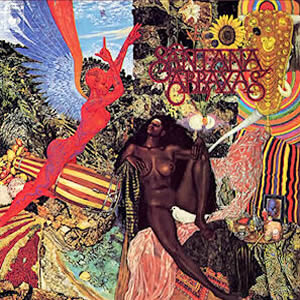
Based in San Francisco, the group was formed in 1966 as the Santana Blues Band by guitarist Carlos Santana and keyboardist/vocalist Gregg Rolie . Santana had a heavy Latin musical influence which he infused into the band, which was initially met with some resistance by some rock-based promoters. However, Bill Graham was impressed with the group, signed on as their manager and secured them a record deal with Columbia Records in early 1969. Their self-titled debut album was released in May of 1969 and featured mostly of instrumental tracks along with their first two singles, “Jingo” and “Evil Ways” which became the group’s first Top 10 hit. Santana’s 45-minute set at the original Woodstock festival brought international attention to the group.
In April 1970, Santana returned to the studio with producer Fred Catero to record their second album. Carlos Santana used his influence from contemporaries like Peter Green and B.B. King and mixed it with traditional elements in a quest to make Abraxas a classic.
Written by percussionist Michael Carabello , “Singing Winds, Crying Beasts” begins with doomy orchestration including sparse piano notes and chimes before Santana’s guitar cuts through in the intro. The main section then features a Latin beat with further Avant Garde, jazzy musical textures and a slightly psychedelic vibe before the piece fades for the into to the hit song “Black Magic Woman/Gypsy Queen”, The cover of a Fleetwood Mac tune starts with Rollie’s delicate organ accompanying Santana’s deliberative guitar through the extended intro before Rollie’s smooth vocals arrive for the verse. The “Gypsy Queen” section of the piece is built on frantic percussion played along with David Brown ‘s thumping bass line with accents of pure rock riffing. The single version reached the Top 5 on the Billboard Hot 100 in January 1971, Santana’s highest-charting song until “Smooth” on 1999’s Supernatural .
Tito Puente’s “Oye Cómo Va” follows with a pointed bass and organ riff joined by a distinctive guitar and drums by Michael Shrieve in the intro before the short Spanish language verses. Between the verses is an instrumental section where Santana provides not so much a guitar solo as some very distinct and memorable licks, while Rollie went for a more improvised organ lead. Aside from the preponderance of Latin percussion, the instrumental jam “Incident at Neshabur” is very similar to some of the instrumentals provide by the Allman Brother’s Band in the day, fusing blues, jazz, and a bit of musical originality. “Se Acabó” starts the original second side with a quick, upbeat jam by percussionist José Areas .
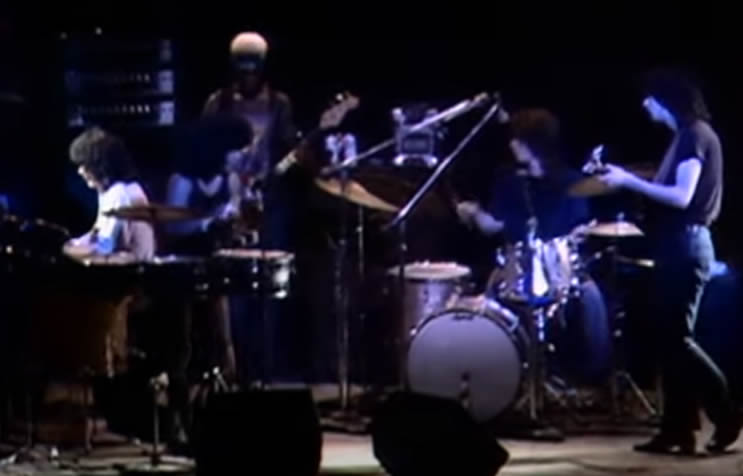
Rolie composed two quality rock-based songs on Abraxas which add some real diversity to the record. “Mother’s Daughter” is a soulful rocker and an entertaining and accessible tune with enough prog rock features to make it interesting, while “Hope You’re Feeling Better” is a hard rocker which starts with a John Lord-like organ riff and maintains its energy throughout. In between the two Rollie tunes is the exquisite instrumental “Samba Pa Ti”, where Carlos provides a slow, deliberative and emotional blues lead and, while this tune gets a bit more intense in the middle with the other group members joining in, it never relinquishes this beautiful vibe. The album closes with “El Nicoya”, a short percussive showcase for Areas and Carabello.
Abraxas became the Santana’s first album to top the US charts and it eventually reached quadruple platinum in sales. The group offered a similar follow-up with Santana III in 1971, which also topped the charts, before their classic line-up began to fracture, most notably when Rollie departed to form his new band, Journey.

Part of Classic Rock Review’s celebration of 1970 albums.
Related Posts
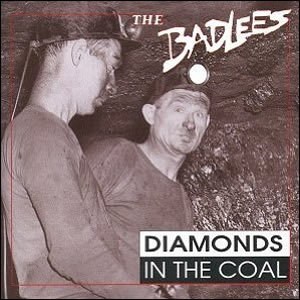
Album Reviews
Diamonds In the Coal by The Badlees
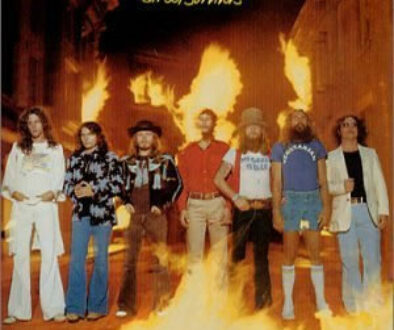
Street Survivors by Lynyrd Skynyrd
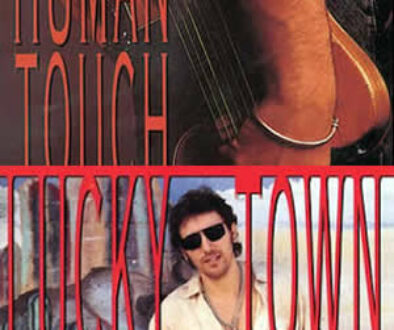
Human Touch & Lucky Town by Bruce Springsteen
Carlos Santana.. I must say all of his music is great.. when are you coming out with another album Carlos.Rick
Santana – Abraxas | Chopsaw Music December 26, 2020 @ 12:08 pm
[…] a review of Abraxas on the Classic Rock Review site. The original album ends with “El […]
Leave a Reply Cancel reply
Your email address will not be published. Required fields are marked *
Ultimate Santana
Twitter Youtube Facebook
Santana: Abraxas

Latin-Rock Video
Check out the new video for this guitar and percussion-driven song by the leading Santana Tribute and Latin-rock band.
Abraxas Song List
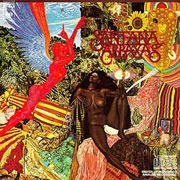
Carlos’ Gear
What he uses currently, as well as the history of the amps, guitars, effects, and more that he has been using throughout his career.
Showing their jazz side, the band also rips through the Carlos Santana/Alberto Gianquinto composition, “Incident at Neshabur.” The song’s complex arrangement, complete with multiple time and key changes, is executed beautifully by the group. And Carlos’s dynamic solo in the end, swinging from soft trills to long, held, on-the-edge-of-feedback notes, is inspired.

Santana Tribute Band
Most accurate renditions of Santana songs anywhere. Hear their versions of Black Magic Woman, Europa, Smooth, more.
Abraxas Album Cover
The name of the album, Abraxas, comes from a line in a Herman Hesse book. And the cover was painted by renowned artist Robert Venosa, who’s other work includes sculpting and film design (his sketches served as a conceptual framework for the movie Dune).
Next Album: Santana III
11956 Bernardo Plaza Dr., #149 San Diego, CA 92128
(818) 784-0922
- Terms of Use
- Privacy Policy


The Lectric Letter:
Abraxas (1998 reissue)
Release Date: 01/03/1998
- 1 Singing Winds, Crying Beasts
- 2 Black Magic Woman / Gypsy Queen
- 3 Oye Como Va
- 4 Incident At Neshabur
- 5 Se A Cabo
- 6 Mother's Daughter
- 7 Samba Pa Ti
- 8 Hope You're Feeling Better
- 9 El Nicoya
- 10 Se A Cabo
- 11 Toussaint L'Overture
- 12 Black Magic Woman/Gypsy Queen

IMAGES
COMMENTS
Abraxas Tour (1970-71) Santana III Tour (1971) The Abraxas Tour was the second concert tour by American rock band Santana. History. This tour was the first of two to feature guitarist Neal Schon. Schon joined the group in December 1970 after declining an invitation to be a part of Derek and the Dominos.
Released: 1970. "Oye Cómo Va". Released: 1971. "Hope You're Feeling Better". Released: 1971. "Samba Pa Ti". Released: 1973. Abraxas is the second studio album by Latin rock band Santana. It was released on September 23, 1970, by Columbia Records and became the band's first album to reach number one in the United States.
Santana's second and biggest-selling album, 'Abraxas,' featured 'Black Magic Woman,' 'Oye Como Va' and 'Samba Pa Ti.' ... Santana Announces 2024 Tour With Counting Crows.
Released on Sept. 23, 1970, the Abraxas LP was wrapped in a truly striking cover, the 1961 painting "Annunciation" by German artist Mati Klarwein, which seemed custom-made for Santana when Carlos spotted it in an art gallery (Mati also supplied the iconic artwork for Miles Davis' Bitches Brew earlier in 1970).Abraxas quickly went to #1 on the album charts, and was certified Gold by the ...
After a month in the studio, the band released Abraxas on September 23, 1970 to a mixed critical reception. Today, it's widely regarded as their most essential album and a rock and roll masterpiece. Carlos Santana took time to speak with Guitar Player about the song selection and recording process of Abraxas, the role of his guitar and the ...
It is unquestionably a 10/10. Andrew Bramah: The only Santana album you need. Scott Baker: Ace album, along with the Third Album, Caravansarai, and Moonflower. To a kid living on a back-end of nowhere council estate who had to work 26 hours a day for a handful of cold gravel, this was exoticism in the extreme.
A little more than a year later, Santana found themselves about to release their sophomore album, Abraxas.Their debut, which would go platinum twice over, had been a top-five album, and their hypnotic cover of jazz percussionist Willie Bobo's "Evil Ways" had scored them a top-10 single and would go on to become a founding staple of modern classic-rock radio.
Abraxas became the Santana's first album to top the US charts and it eventually reached quadruple platinum in sales. The group offered a similar follow-up with Santana III in 1971, which also topped the charts, before their classic line-up began to fracture, most notably when Rollie departed to form his new band, Journey.
Black Magic Woman / Gypsy Queen. 3. Oye Como Va
Abraxas Santana. Released September 23, 1970. Abraxas Tracklist. 1. Singing Winds, Crying Beasts Lyrics. 2. Black Magic Woman / Gypsy Queen Lyrics. 66.6K 3. Oye Cómo Va ...
Carlos Santana and the group, however, did just the opposite. Abraxas, released almost exactly one year after the debut album, not only lived up to the promise of that first record, but exceeded it. Abraxas is generally considered to be Santana's finest album, and with good reason. While maintaining the raw, percussion-driven feel of the ...
Track List: 1-31. Santana - Singing Winds, Crying Beasts (0:00) 2. Santana - Black Magic Woman/Gypsy Queen (4:49)3. Santana - Oye Como Va (10:10)Part 1. http...
1970.
Santana, Abraxas - Santana III. Sony/Legacy has released the first three Santana albums on CD. In the tradition of Legacy's critically acclaimed Expanded Edition series, these reissued masterpieces include all of the orginal music and album artwork, and feature new liner notes by Ben Fong-Torres. Also included are new interviews with Carlos ...
Santana will play a career-spanning set featuring fan favorites from his legendary Woodstock performance to his latest album, 2021's Blessings and Miracles. In 2020, The Opus explored Santana's classic album Abraxas. Listen to the four-episode season here. Santana 2023 Tour Dates: 05/04 — New Orleans, LA @ New Orleans Jazz and Heritage Fest
Black Magic Woman / Gypsy Queen. 3. Oye Como Va
in the spine : SANTANA ABRAXAS Printed in USA On labels : Red with columbia in Yellow. PC30130 gatefold inside right side KC 30130. Any help aprecciate. Reply Helpful. ... Santana Abraxas tour medley Toussaint L'Overture - Evil Ways Rhode Island1970. 0:00; Lists Add to List. The Cosmos Of JasonMcLeest by JasonMcLeest;
Santana Abraxas tour medley Toussaint L'Overture - Evil Ways Rhode Island1970. 0:00; Lists Add to List. MFSL (Original Master Recording) & Related LPs by addicted0403; The One That I Want by jamiii; Upgrade My Faves by jamiii; Mobile Fidelity Sound Lab by MedozK; 1970 by jamiii;
Santana - Abraxas. More images. Label:Columbia - UDCD 775, Mobile Fidelity Sound Lab - UDCD 775: Series: ... Santana Abraxas tour medley Toussaint L'Overture - Evil Ways Rhode Island1970. 0:00; Lists Add to List. Mobile Fidelity Sound Lab ~ 24 Karat Gold CD's by 100x; Audiophile CDs by robbio5;
About The Event: GRAMMY-winning Rock and Roll Hall of Fame guitarist Carlos Santana alongside GRAMMY and Academy Award-nominated rock band Counting Crows have announced they will hit the road together for the Oneness Tour this summer. Santana will perform high-energy, passion-filled songs from their fifty-year career, including fan favorites from Woodstock to Supernatural, which celebrates its ...
Walking tour around Moscow-City.Thanks for watching!MY GEAR THAT I USEMinimalist Handheld SetupiPhone 11 128GB https://amzn.to/3zfqbboMic for Street https://...
Español:Acompáñanos en este recorrido por Moscow City también conocido como Centro Internacional de Negocios de Moscú.Este distrito también se llama Ciudad d...
🎧 Wear headphones for the best experience.In this video, we will walk along the famous tourist routes of Moscow, take a walk along the renovated embankments...
🎧 Wear headphones for the best experience.In this video, we will walk through the beautiful streets of old Moscow, as well as visit some new districs.Moscow...